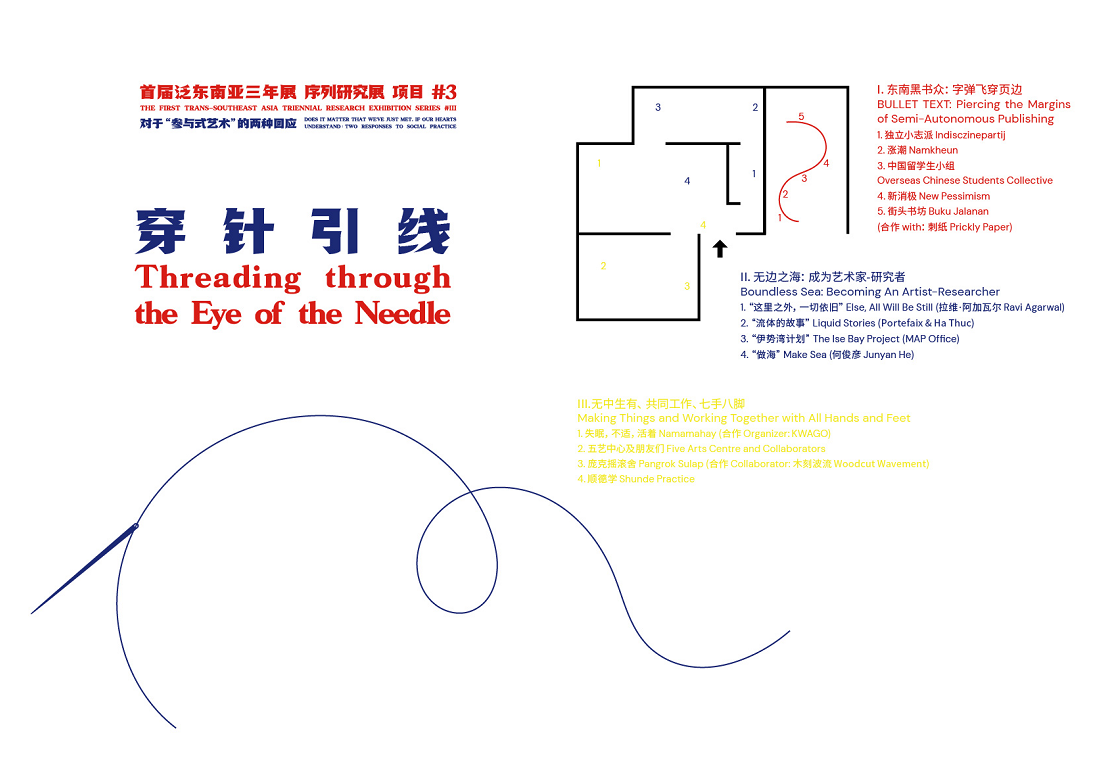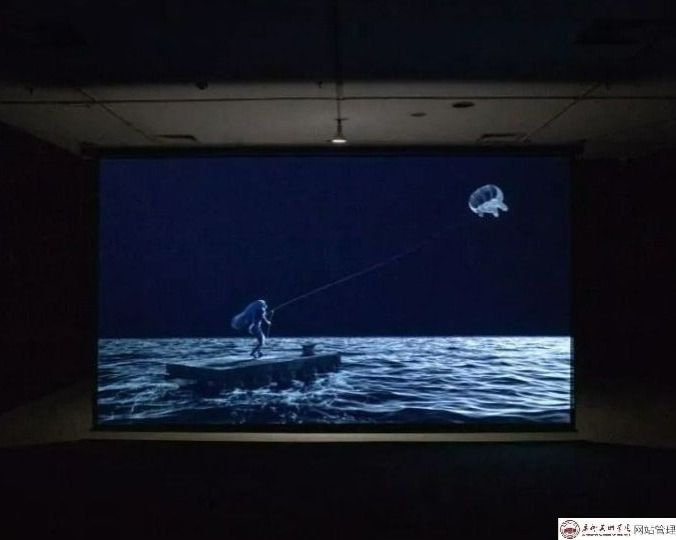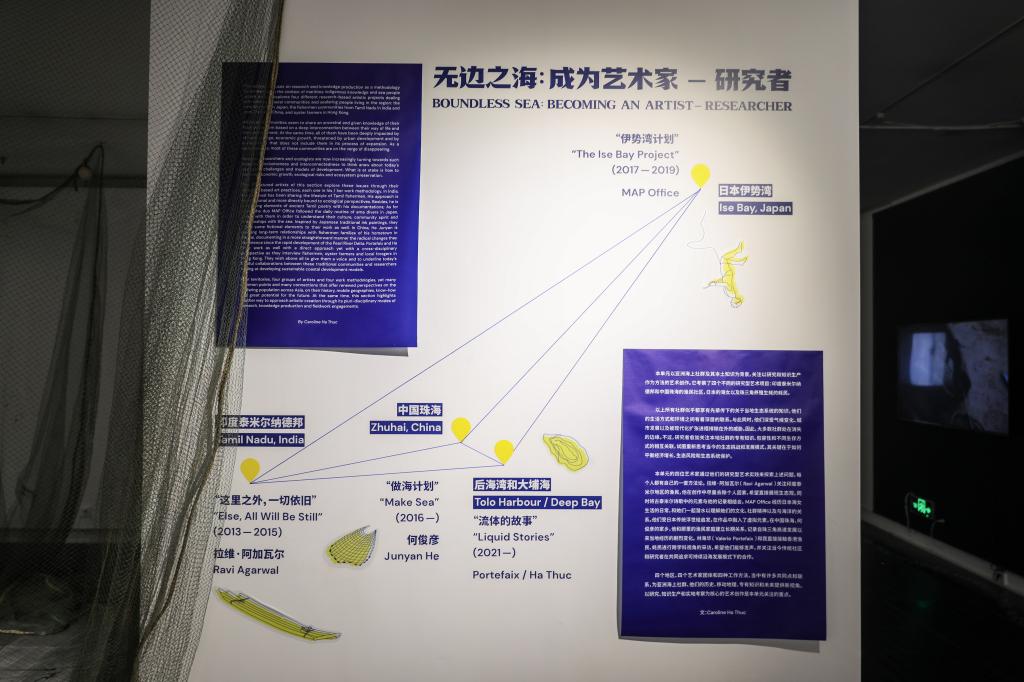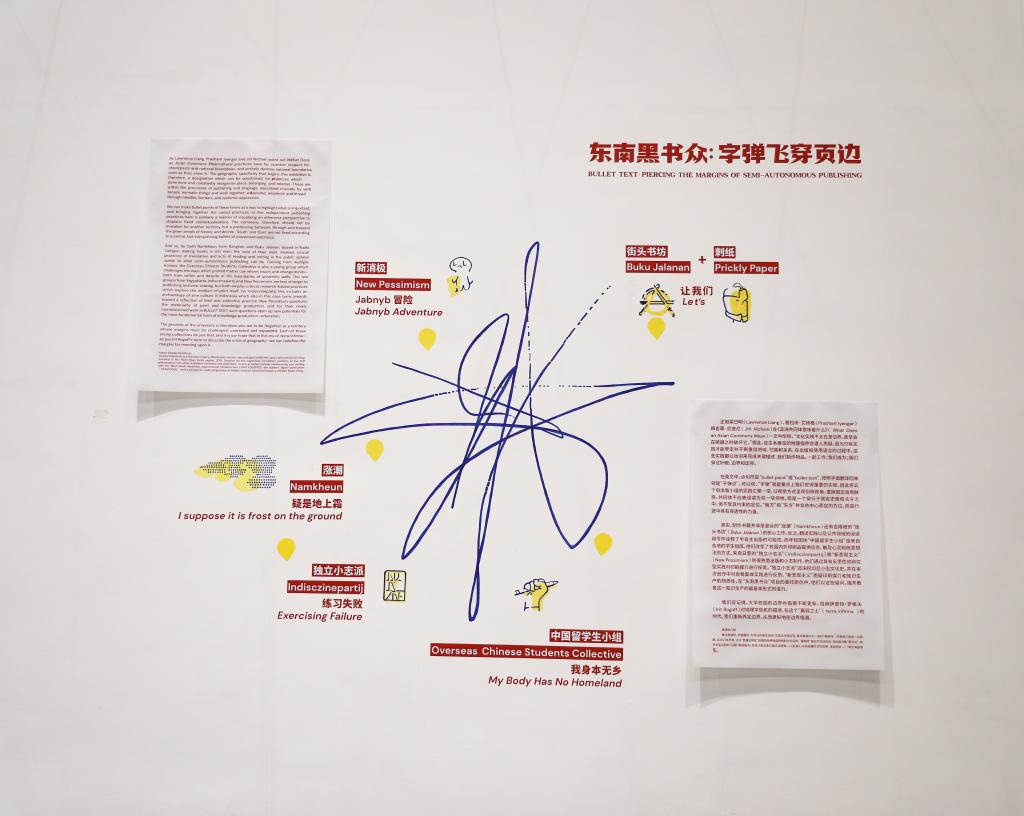Curatorial Text
Sometimes, we try to understand a project based on a predeter-mined geographical area — Southeast Asia, mainland China or some other ‘local place’. In my experience, this can be helpful, but more often than not, it may be misleading — causing generalizations by imposing meaning and creating blind spots. Once in a meeting, I revealed my ignorance when trying to bring attention to the fact that oral translation services ‘without accent’ are very expensive. This idea somehow reflects my western-centrism: I considered British and American English as an accent-free ‘orthodox’ while other kinds of English are ‘substandard’, therefore valuing the higher cost as a justififiable addition. Non-native accents and ‘unorthodox’ languages are recognized as representations of diversity in certain contexts, while in other scenarios they are just a set of numbers on budget sheets. Over the past two years, our ways of keeping in touch with the world have been limited to online channels. The signal is sometimes poor and the message not always clear — often causing misunderstanding, deviating imaginations or exaggerated illusions of consensus. But the congestion of connection has been with us all along. The three chapters of “Threading through the eye of the needle” come from the desire to broaden definitions and provide possible answers to the question of ‘what we can do together’ through ongoing practice.
Coming back to our territory here, the university — the reflflection of the function of this specifific place, ideas of reading, writing and education, as well as the designated framework of ‘Southeast Asia’, have all motivated me to invite Dis play Distribute to help develop the fifirst chapter of the exhibition. Their research, publishing activities, the LIGHT LOGISTICS courier network and other platform-building practices touch upon such issues, and we have s imilar views on how exhibitions can act to facilitate conversations. Departing from the concept of ‘Southeast Asia’, “BULLET TEXT: Piercing the Margins of Semi-Autonomous Publishing” shares the work of five publishing groups as well as the outcomes of several inter-regional interactions during the past few months. These contributions, the majority of which are new commissions for this exhibition, interact with local practitioners and other works in the exhibition, hoping to bring forward a kind of energy that does not always stimulate in a comfortable manner. Apart from the five commissioned artist groups, “BULLET TEXT” also offers audiences the open space of a reading corner. We hope this library can continue beyond the exhibition, to find itself in the outside world, connect people and make space — as its publications do.
The second chapter, “Boundless Sea: Becoming An Artist Researcher”, is curated in collaboration with Caroline Ha Thuc, researcher of the Art Museum of Guangzhou Academy of Fine Arts and the Research Center of New Art Museum Studies. Here, the ‘territory’ of the sea is ambiguous and fluid, and the regions are not only defined by people. We follow the streams of thoughts of the exhibition’s practitioners, learn about the different dimensions of ‘participation’, connect makers and together gain a better understanding of each of our own personal positions.
Finally, in “Making Things and Working Together with All Hands and Feet”, I have chosen to work with five different collectives as a response to the urgency of making connection. Members of Pangrok Sulap live and work in Mount Kinabalu in Sabah, Malaysia. Using woodcarving as medium, they write the stories of the village with other inhabitants. Their artworks are closely related to villagers’ interpretations of local stories, legends, music, handcraft and dance. The members of Pangrok Sulap are also themselves village carpenters, teachers and volunteers among many roles. Only a few of their members can speak English, casting those few automatically into another role as spokesmen of the group. While preparing this exhibition, they were sometimes working in areas with poor network signal, and we lost connection. But their lives and practice are inseparable, and it is from this crucial perspective that we present their work. In addition, I have also invited Shanghai-based group Woodcut Wavement, another woodcut collective premised upon collaborative creation, to engage in the research and presentation of Pangrok Sulap’s work. The next group, Kwago, is a lab for independent research and publishing. Interestingly, they are the organizer of a regular online publishing. They are the organizer of a regular online meeting for artists, interestingly called ‘Bad Connection’. Recently, Kwago also created a guide and toolkit to assist people during the exceptional period of the pandemic, providing new imaginations for cross-regional and cross-disciplinary communication. In “Making Things and Working Together”, Kwago has employed a Raspberry Pi device as a technical medium to build a portable archival system in collaboration with more than twenty artists, publishers, popular science organizations and practitioners from other fields. With their tool, Kwago sends an invitation to audiences in Guangzhou to connect with, explore and respond to all the participants’ work. And last but not least, Five Arts Centre and Collaborators and Shunde Practice begin together from the problems that concern them most, digging deeply into the past and the present, using documentary theatre and interviews as the main methods respectively. Both see themselves as open collectives without solid fences and are glad to welcome different collaborators into their work. Under this framework, individuals and the collective nurture one another, but at the same time, chaos occurs and demands more encounter, adjustment and exploration.
Curating is not my profession. These past few months have simply been another way for me to continue practicing with friends. Uncertainties and quarrels are frequent, but during the process of untying these knots, we listen to one another, gain better knowledge about where we are and what we want to say, and we continue threading through the eye of the needle.
By Stephanie Lu Sipei
Research Centre for New Art Museum Studies
Guangzhou Academy of Fine Art






